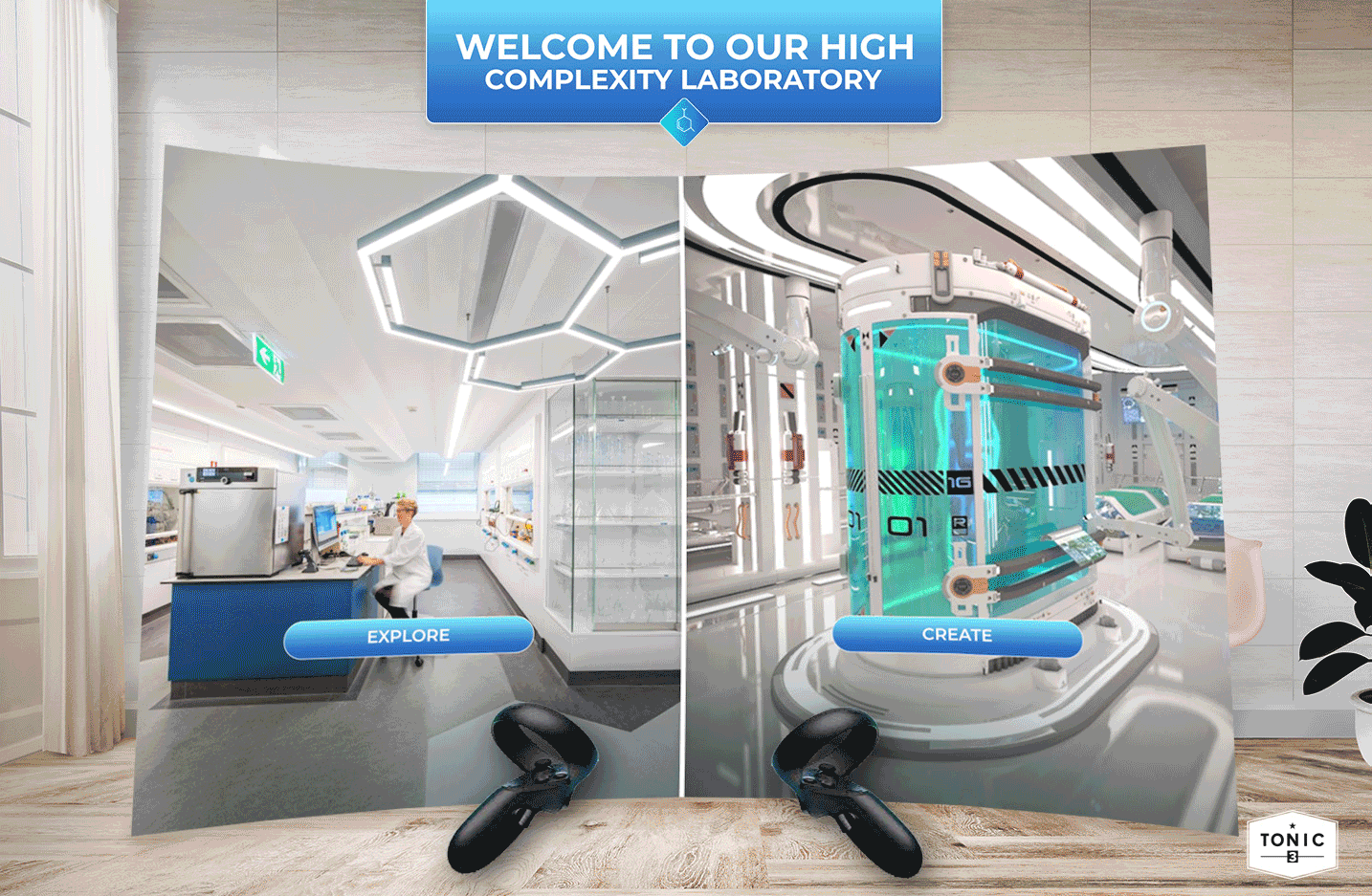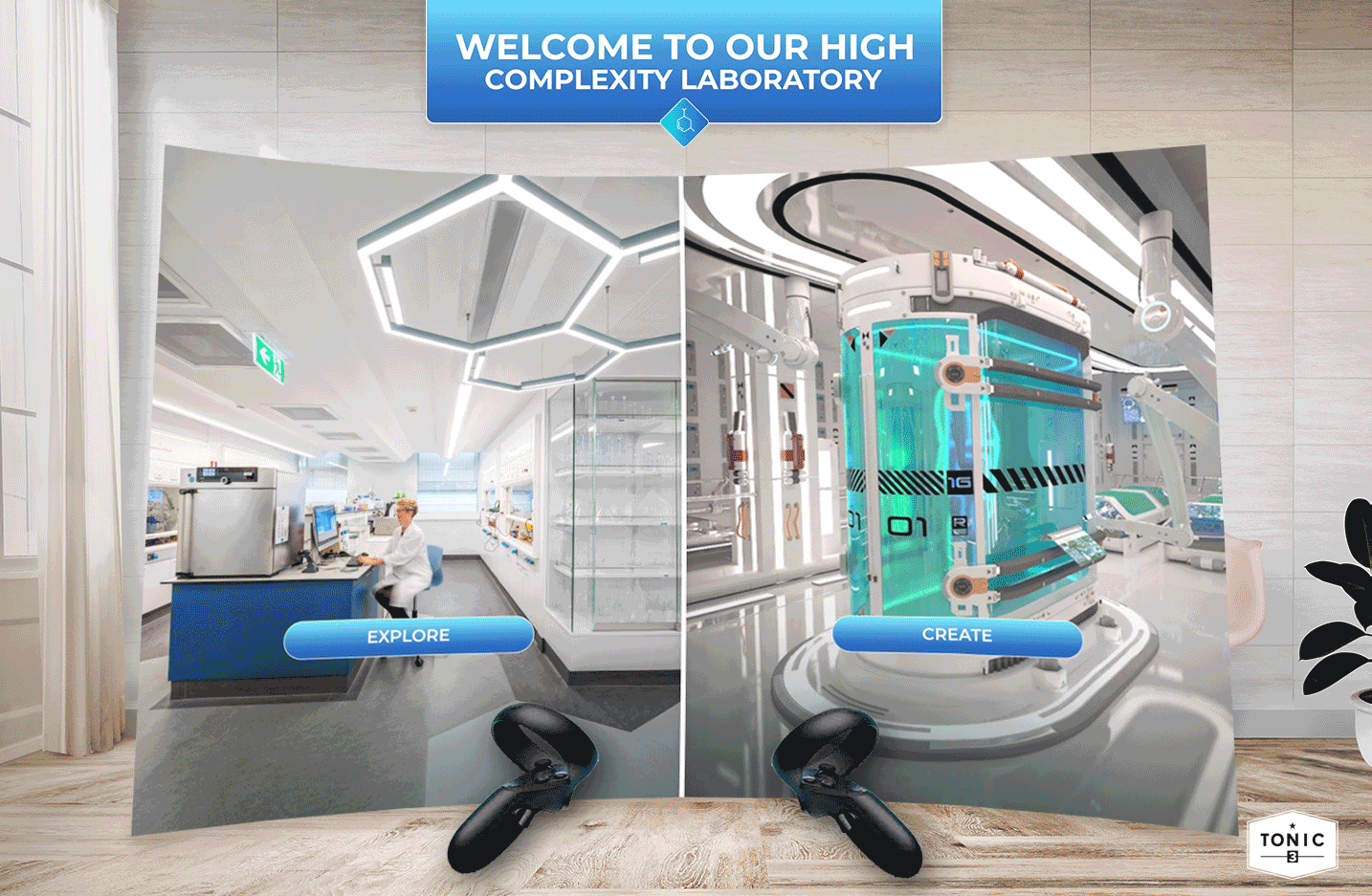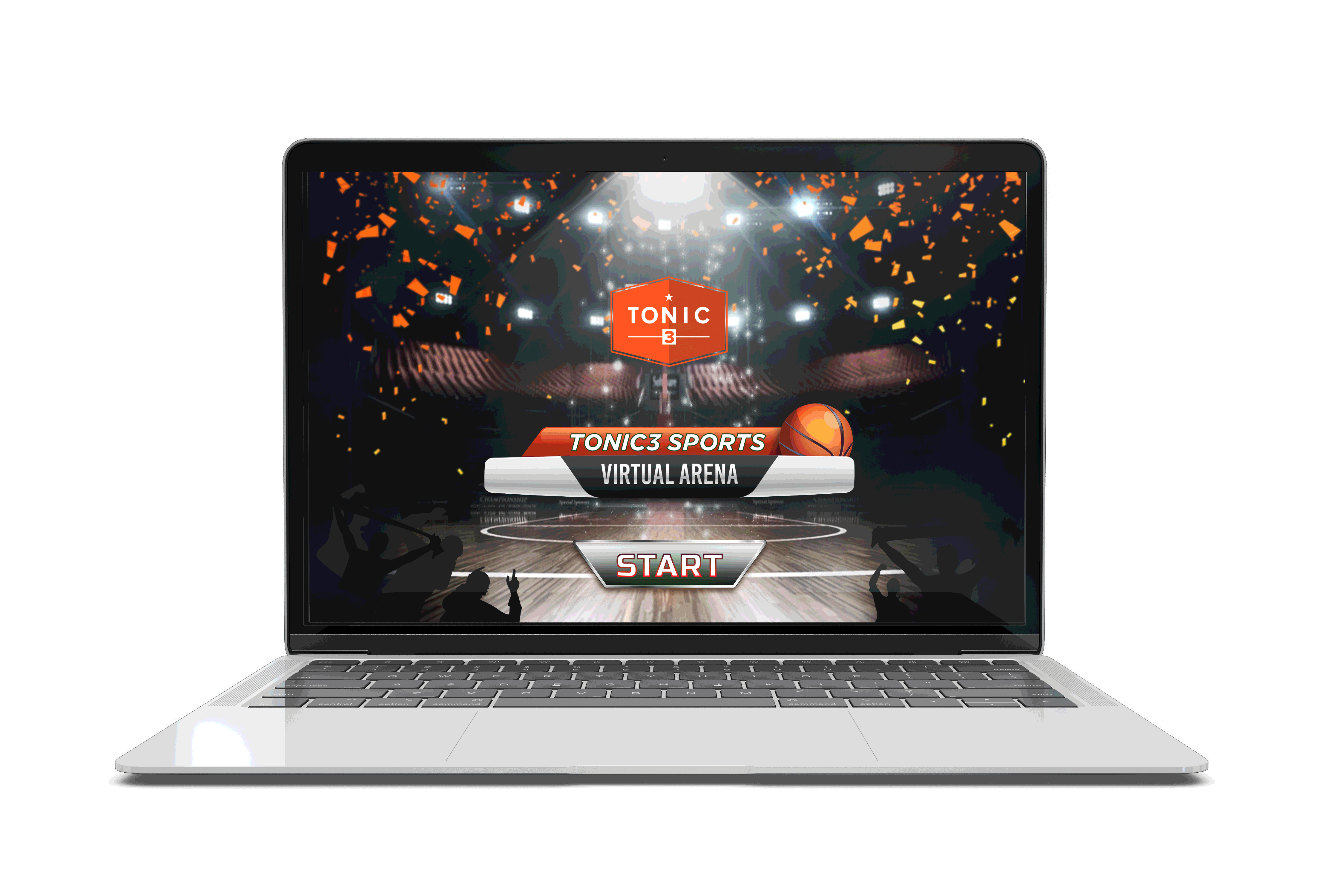Maximize User Experience in Virtual Spaces

User-centric Focus
Before creating a virtual space, it’s important to really know who you’re making it for. Understanding your users is the best tool for crafting a positive user experience (UX) and can be accomplished with interviews and user personas.
From there, the needs and desires of users can be refined into a design with the input of the team and the help of agile methodologies. Once the direction of the project and key features and priorities have been decided, testing will be necessary to get the feedback of real users and ensure everything will be functional for launch.
What Can You Do with Virtual Spaces?
By harnessing the power of VR, we can create highly customized, innovative, and engaging experiences. Unlike any other experience, VR is 360°, inviting users into a whole new world of interactions, content, events, and virtual spaces.
With virtual reality, businesses can host events such as award ceremonies, presentations, and product launches. Companies can also use VR to create remote training opportunities or to develop 360° tours of environments like sports venues, real estate, and other spaces.
Some of the many benefits of VR include:
- Auditory and visual content can be customized to the target audience
- Virtual guided and 1-on-1 assistance can be offered to answer questions and concerns
- Users can easily share content and materials, which helps with brand exposure
- Inventory can be easily showcased thanks to direct access to a product catalog via eCommerce
- And so much more!
.gif?width=4116&name=Desktop-video-%20(1).gif)
How Should You Approach VR?
At Tonic3, we suggest a 7-step iterative process:
- Determine necessary capabilities
- Determine platform for execution
- Validate 1-2 key potential product ideas/features
- 2-3 iterations
- UX discovery phase
- Research and development
- User Testing
How Do I Know If It Works?
There are 16 dimensions of the physical, emotional, and mental experience of VR (including simulator sickness) that must be evaluated to ensure a product is ready for users. Above all, VR usability testing and comprehensive UX research will provide the answers to whether a VR space or experience works and are key in creating a positive user experience.
9 Examples Of Industries That Benefit From Virtual Spaces
There are too many virtual reality examples to name, as almost any industry can benefit from VR, but a few include campus tour examples, real estate 360° tours, virtual tours of sports or entertainment spaces, and much more
Check out more examples of how different industries can use VR below!
Healthcare
Patients can use VR tours to explore hospitals and laboratories, which can ease stress about going in for procedures. VR experiences can also be used to explain and explore the human body, which can help give patients a visual aid to help understand treatment and diagnosis.

Retail
With VR, retailers don’t necessarily need a physical storefront. Customers from all over the world can visit a virtual space to shop and try on products. This can reduce travel and waste, making the shopping experience more environmentally friendly while also broadening the customer base.
For example, check out the 3D retail tour we created for WYLLOW.
Real Estate
Virtual tours of real estate allow renters to have a 360° view of their potential home and even place furniture in the virtual space. This experience allows users to connect with real estate agents and explore homes without having to travel.
.gif?width=225&name=Mockup-Vertical-2%20(2).gif)
Entertainment
With VR, users can interact with characters and settings from their favorite films and TV shows in fun, new ways. Meanwhile, entertainment companies can use these games and VR experiences to promote their products.
Education
VR university spaces allow students to experience campus facilities before attending and provide a better understanding of the activities and resources that are available to them.
.gif?width=1434&name=Video-Final-Vr%20(2).gif)
Wellness
VR also allow us to maximize the potential of a 3D model. Using Unreal Engine and recorded a immersive video to emulate an in-person walk-in experience to generate expectations before an opening and to promote more sales.
Sports
The sports industry can use VR to create games and quizzes for their fans or provide virtual tours of venues, letting users explore never-before-seen locations like locker rooms.

Food & Beverage
Although the technology to taste and smell in virtual reality isn’t a possibility (at least not yet) customers can attend virtual events and experiences about their favorite foods and drinks and participate in guided tours, trivia, Q&A sessions, prize draws, and more!
.gif?width=3036&name=Mockup%202-Mobile%20(1).gif)
Virtual Offices
Collaborating from all over the world is easy with VR, as events and offices can be created in virtual spaces for people to join from the comfort of wherever they are!
As an example, you can check out Tonic3’s virtual offices (via VR headsets, mobile devices, or desktops).
For more virtual reality industries examples, visit our 360° virtual spaces applications deck.
.gif?width=650&name=Banner-Virtual-Spaces%20(3).gif)
About Tonic3
Tonic3 is an international agency with headquarters in Dallas and offices in Madrid, Buenos Aires, and São Paulo. During our 27 years in the business, we’ve worked with a broad range of clients, from Fortune 100 companies to funded startups from over 20 countries. A few of the brands we’ve worked with include Disney, Citibank, Yum! Brands, Lennox, and Accor Hotels.
We’re considered experts in agile methodologies, cutting-edge visual techniques, and UX design. We come to every project with a user-centric approach and commitment to creating something that works for both our clients and their customers, testing everything to ensure it’s the best it can be before users ever set eyes on it.
Interested in more examples of what can be done with extended reality? Check out the capabilities of AR with our Target Tracking AR Filter and our Gesture Tracking AR Filter.

.jpg?width=50&height=50&name=1632885917795%20(1).jpg)